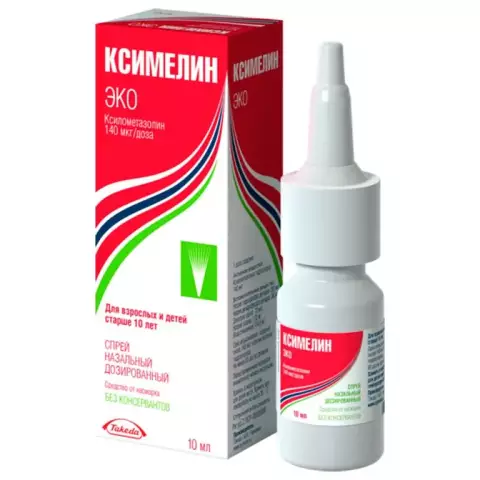- Author Rachel Wainwright [email protected].
- Public 2023-12-15 07:39.
- Last modified 2025-11-02 20:14.
Cyclovir
Instructions for use:
- 1. Pharmacological action
- 2. Release form
- 3. Indications for use
- 4. Contraindications
- 5. Method of application
- 6. Side effects
- 7. Drug interactions
- 8. Storage conditions
Ciclovir is an antiviral synthetic drug.
pharmachologic effect
The active ingredient of Ciclovir, acyclovir, has an antiviral effect.
The action of the drug is based on the formation of "defective" viral DNA, which leads to suppression of the reproduction of new generations of viruses.
Ciclovir is active against cytomegalovirus, as well as viruses:
• Varicella zoster;
• Herpes simplex (types 1 and 2);
• Epstein-Barr.
Release form
Ciclovir is produced in the form of tablets containing the active ingredient acyclovir in an amount of 200 mg, as well as in the form of a cream and ointment for external use and an eye ointment.
The active substance acyclovir is also included in some other medicines, such as Vivorax, Provirsan, Medovir, Herperax, Acigerpin and Acyclovir.
Indications for the use of Ciclovir
According to the instructions, Ciclovir is prescribed for systemic use in the following cases:
• In the treatment of infections caused by the viruses Varicella zoster and Herpes simplex types 1 and 2, as well as as part of preventive measures, including conditions against a background of reduced immunity;
• In complex treatment after bone marrow transplantation with severe immunodeficiency;
• For the prevention of cytomegalovirus infection after bone marrow transplantation operations.
Ciclovir eye ointment is used locally in ophthalmology in the treatment of keratitis, as well as other eye lesions caused by the Herpes simplex virus.
According to the instructions, Ciclovir external ointment and cream are used for skin infections that are caused by Herpes simplex and Varicella zoster viruses.
Contraindications
According to the instructions, Ciclovir is contraindicated for use in case of hypersensitivity to the active ingredient (acyclovir) or excipients that make up the drug.
The possibility of using Ciclovir during pregnancy is determined individually by a doctor based on the expected benefit or harm from the drug for the mother and child.
The use of Ciclovir during breastfeeding is not recommended in order to avoid the excretion of the active component of the drug in breast milk.
Ciclovir in the form of an ointment or cream for external use is not used for application to the mucous membranes of the eyes, mouth and vagina.
Method of application of Ciclovir
Ciclovir is taken internally by adults and children from two years of age in a single dosage of 1-2 tablets with a frequency of use from three to five times a day.
For younger children, the dosage of Ciclovir is usually halved.
The duration of drug treatment is from five to ten days, however, against the background of renal failure, the dosage regimen should be adjusted.
Side effects of Ciclovir
Most often, Ciclovir, according to reviews, when taken orally, causes:
• Vomiting;
• Nausea;
• Abdominal pain;
• Diarrhea;
• Headache;
• Skin rash;
• Increased fatigue;
• Dizziness;
• Hallucinations;
• Decreased concentration of attention;
• Fever;
• Drowsiness or insomnia.

Much less often, when taking Ciclovir, according to reviews, it can develop:
• Transient increase in the concentration of bilirubin in the blood;
• Hair loss;
• Erythropenia;
• Lymphocytopenia;
• Leukopenia.
With local and external use, Ciclovir, according to reviews, can cause:
• A burning sensation that occurs at the site of application;
• Conjunctivitis;
• Blepharitis;
• Superficial punctate keratitis;
• Itching;
• Skin rash;
• Erythema;
• Peeling;
• Dry skin.
When Ciclovir gets into the mucous membranes, inflammation may begin.
Ciclovir drug interactions
The risk of developing a nephrotoxic effect increases sharply with the simultaneous use of Ciclovir with nephrotoxic drugs, especially against the background of impaired renal function.
An increase in the effect of Ciclovir was noted with simultaneous administration with immunostimulants.
Storage conditions
Ciclovir in the form of tablets can be stored for no more than three years, in the form of an external ointment and cream - up to two years (subject to the recommended storage regime).
Information about the drug is generalized, provided for informational purposes only and does not replace the official instructions. Self-medication is hazardous to health!






